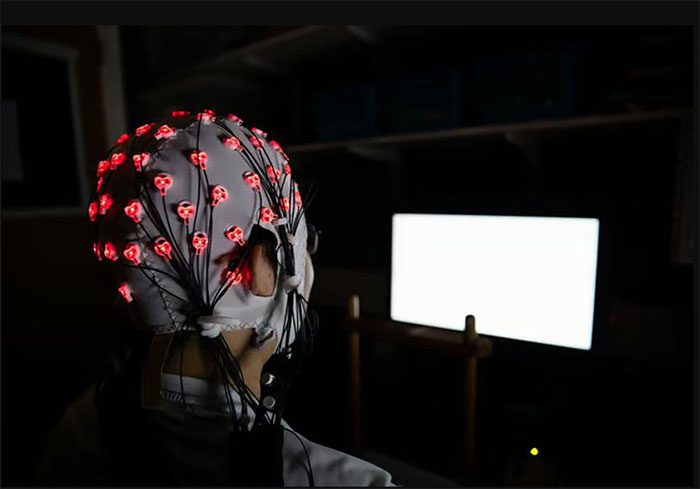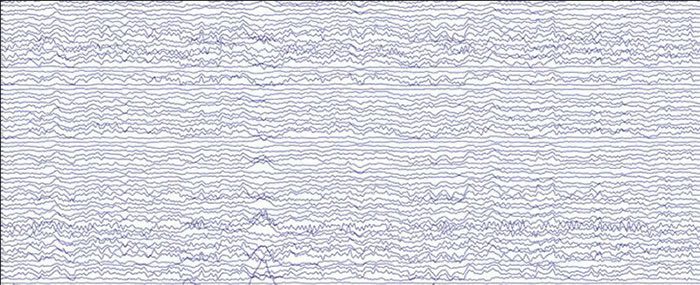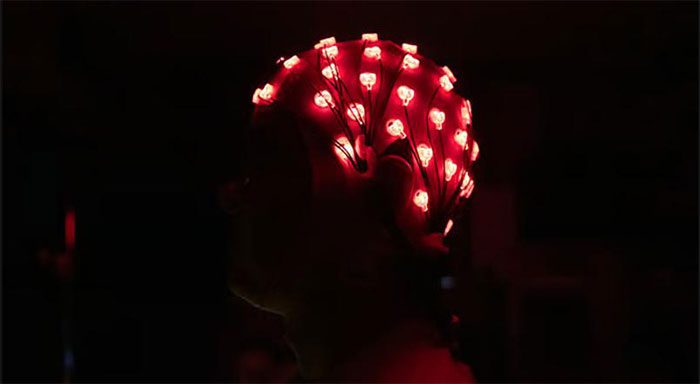The human brain can learn three times faster if exposed to light at its specific alpha brainwave frequency for just 1.5 seconds.

To accelerate human brain function, simply project “cue” light into their brain for 1.5 seconds – (Photo: CAMBRIDGE UNIVERSITY).
This research on the use of “cue” light for human brainwaves was published by researchers from the University of Cambridge (UK) and Nanyang Technological University (NTU) in Singapore in the journal Cerebral Cortex.
“Cue” Light for Brainwaves
The brain is a constantly active center, and when measured by an electroencephalogram (EEG), certain patterns appear as oscillating brainwave activity.
When you feel calm and relaxed, or even when meditating, your brainwaves tend to oscillate in the range of 8-12 Hz – the alpha wave spectrum.

Sample EEG reading when a person’s brain is in a calm state – (Photo: CAMBRIDGE UNIVERSITY).
According to Professor Zoe Kourtzi, each individual has their specific alpha wave frequency. She is a professor of experimental psychology at the University of Cambridge (UK) and the author of the study.
Professor Kourtzi stated: “We simulate these oscillations. Then we allow the brain to synchronize with its own simulated frequency at its optimal state in just 1.5 seconds.”
“By harnessing this brainwave rhythm, we can enhance flexible learning ability throughout a person’s life, from infancy to adulthood.”
Surprising Results
Professor Kourtzi and a team of neuroscientists recorded EEG from 80 study participants, identifying each individual’s unique alpha wave frequency.
They then created “optical pulses” – white squares flashing on a computer screen, adjusted to precisely match each individual’s alpha wave.
The participants viewed these pulses for 1.5 seconds. They were then tasked with a quick cognitive task, where they had to identify specific shapes among cluttered visuals.

EEG used to measure brain activity of participants aged 18-35 – (Photo: CAMBRIDGE UNIVERSITY).
“Learning Speed” varied significantly between groups: Participants provided with the exact frequency matching their EEG performed the best. This group improved their reading speed by at least three times compared to the control group.
They maintained their performance levels the following day when the exercise was repeated.
Co-author Dr. Elizabeth Michael from the University of Cambridge noted: “The intervention itself is very simple, just a brief flash on the screen. However, when we hit the correct frequency combined with the right phase alignment to the brainwaves, it seems to have a powerful and lasting effect.”
“In fact, the brain quickly pictures the simulated brainwaves, and then the neurons communicate with each other to string the information together,” stated co-author Professor Victoria Leong from the Children’s Department at the University of Cambridge associated with NTU. “Our study provides insights into the optimal phase of brainwaves, which is when our neurons are most easily stimulated.”
The research team remarked: “Although our study utilized complex EEG machines, there are now simple headsets available that allow you to measure brain frequencies quite easily.”


















































